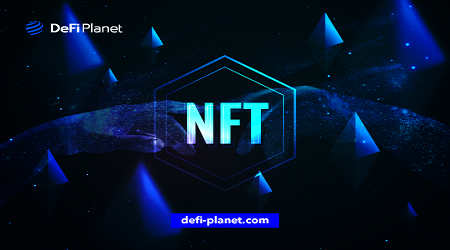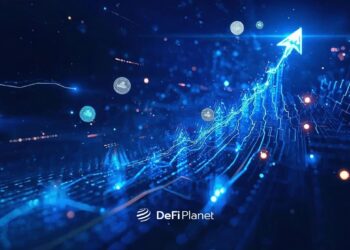NFTs and the metaverse are two highly-discussed topics with significant business potential. Despite the media’s coverage of these concepts, many individuals and businesses are still trying to fully understand their meanings and applications.
It is important to note that while they are often mentioned in the same context, NFTs and the metaverse are different concepts. To fully grasp their significance and potential, it is essential to understand what they mean and their roles.
This article explores the promising worlds of NFTs and the metaverse, discussing the relationship between NFTs and the metaverse and highlighting examples of how NFTs have been used in the metaverse.
An Overview of Non-Fungible Tokens (NFTs) and the Metaverse
Non-fungible tokens (NFTs) are digital assets that represent ownership of items like social media posts, images, paintings, videos, and lots more. NFTs are not limited to paintings, images, and videos; they also represent tokenized versions of physical world assets like buildings and land.
The metaverse, on the other hand, is a 3D virtual world that aims to replicate and improve the real-world experience in digital space. Many top tech and blockchain companies have expressed interest in the metaverse and their desire to use it to further their respective companies’ visions.
The Relationship Between NFTs and the Metaverse
Non-fungible tokens (NFTs) offer safe, unique, and diverse ways to own, trade, and monetize digital assets. They are one-of-a-kind, indivisible, and unchangeable. The metaverse’s limitless trading opportunities make a connection with NFTs the logical next step.
NFTs enable the creation and trading of unique and varied digital assets. Users can develop and trade unique digital items like virtual weaponry, apparel, and real estate in the metaverse. NFTs, which enable the secure and transparent ownership and sale of these assets, help create a robust virtual economy.
NFTs can act as virtual property deeds and assist in gaining exclusive access to a given location in the metaverse. Also, NFTs allow creators to make money from their digital works. Designers can create and market exclusive digital goods like personalized avatars or in-game objects in the metaverse. NFTs make it possible to own and sell these things.
As the metaverse grows and changes, NFTs will play a more prominent role in the virtual economy. They are one of the keys to changing the metaverse’s basic structure and transforming how users interact, do business, and socialize in traditional social networks.
Roles of NFTs in the Metaverse
Despite the relative novelty of NFTs and the metaverse, several businesses have discovered creative and fruitful ways to use them simultaneously.
Here are some of the applications of NFTs in the metaverse:
Virtual Marketplace
Virtual reality communication spaces are growing in popularity, with apps like VRChat providing a platform for sellers to showcase web-based assets or create new assets within the VR landscape. These spaces also offer a unique opportunity for trading NFTs.
Nike has already recognized the potential of VR and NFT marketplaces, demonstrated by the creation of their virtual world, “Nikeland.” Additionally, they have acquired the studio RTFKT, which is renowned for producing NFTs. This serves as a prime example of how various brands across industries can benefit from integrating with VR and NFT to create virtual markets.
Art Gallery
VR is possibly the best platform for viewing art. You get a close-up look at every detail from every angle in a far more relaxed atmosphere. Many museums, for example, now display NFT artwork in metaverses (like Cryptovoxels) powered by the Ethereum blockchain. Cryptovoxels is home to art galleries and museums, including the FC San Francisco Carolinum and the San Francisco Museum of Modern Art.
New Horizons
In the physical world, real estate is a lucrative industry. It is also the same in the metaverse. We are not referring to real homes being sold online. Instead, we’re talking about digital territories and land being sold in parts or as a whole so that users can build on them. For instance, Decentraland is a virtual territory in which plots of land can be bought as NFTs, and everything is rendered in 3-D.
Marketing
Businesses have realized the importance of NFTs in the metaverse and are using them to reach a wider audience. They are now attracting younger customers by advertising or selling digital products before physical ones are available for purchase. This contributes to the brand’s increased visibility and audience reach.
For instance, when a fashion company wants to promote a new clothing line in a virtual world, they could design an NFT based on a limited-edition item from the collection, such as a rare designer gown or a one-of-a-kind accessory. The NFT would be created using high-quality 3D modeling and texture mapping, giving it the appearance and feel of an actual physical object.
The fashion brand could then collaborate with a popular virtual world platform, such as Somnium Space, to host an exclusive event where players can bid on and purchase the NFT. The event could be advertised through various channels, such as social media, partnerships with influential people, and email campaigns.
When the event begins, players can bid on the NFT with cryptocurrency, with the highest bidder receiving the limited edition item. The NFT is then sent to the winner’s digital wallet, making the item entirely theirs and giving them complete control over it.
The fashion brand creates a unique and exclusive experience that appeals to metaverse players by using an NFT to promote its new clothing line. The NFT’s limited-edition status makes it highly desirable, and the fact that it is a virtual item means that players can show it off to their virtual friends. This creates a sense of exclusivity and social proof for the brand’s new collection, which can help to drive additional interest and sales.
Better Community and Social Experience
NFT contributes to the metaverse by improving people’s experiences with communities and social events. We have seen this when tech project communities form a metaverse community by buying some form of NFT assets. Members can better understand what their fellow community members look like and their preferences in real life by using NFT avatars. This will strengthen the bonds between members of the community.
Real-World Examples of NFT Success
Creating Digital Scarcity While Establishing Art Ownership
Example: NFT Artworks
NFTs meet the need for authentication in the art world’s marketplace, which is becoming increasingly digital, by linking a digital file to its creator in a way that can’t be changed.
In addition, the process is democratic and decentralized. Anyone can create an NFT artwork. Artists can set their prices for their works and control their secondary market, democratizing access to new markets for artists worldwide.
In this case, NFT offers artists and auction houses transparent ownership rights.
Improving Real Estate Transactions
Example: The Property Markets Group
The current method of transferring property ownership is time-consuming, costly, and involves a lot of paperwork. It becomes much easier to trade and manage property rights by “tokenizing” them.
Property Markets Group has closed more cryptocurrency real estate deals than any other developer worldwide. It has more than $5 billion in real estate development planned for the next five years, demonstrating that this isn’t a fad.
Providing Secure Digital Wine Provenance
Example: Yao Family Wines and NFT Collectibles
The high-end winery owned by former NBA player Yao Ming, Yao Family Wines of Napa, once auctioned off a limited-edition NFT and a special bottle of wine.
The provenance, transaction history, and current ownership of a bottle of wine are all fully traceable, making its value evident to those looking to buy, sell, or invest. This sale method gives the buyer immediate ownership rights and a digital investment opportunity. It reduces the risk of fraud because of the manual processes used at Yao Family Wines to define ownership.
In a nutshell, the company used NFTs to carry out hassle-free, trusted authentication of their wines.
Introducing Monetary Incentives and Market Trading to Gaming
Example: GameFi
GameFi refers to blockchain games that allow players to earn money. The ecosystem uses crypto, NFTs, and blockchain technology to create a virtual gaming environment where players can earn in-game rewards by completing tasks, competing against other players, and progressing through various game levels.
Players can exchange their in-game assets on various crypto platforms and NFT marketplaces. Hence, players earn money while having fun.
Creating One-of-a-Kind Musical Experiences
Example: Kings of Leon and their NFT Album
The musicians were among the first to release a record as a collection of NFTs with the release of their album “When You See Yourself,” which generated over $2 million in sales. With NFTs, they could add items that were exclusive to their performances and album releases in the sale.
For example, each token had a chance to win “Golden Tickets,” which gave the owner four front-row seats to any future Kings of Leon show and included exclusive artwork and limited-edition vinyl.
In Conclusion
- NFTs are an essential component of the metaverse, which aims to replicate our physical environment with its decentralized and interoperable features. As a result, many individuals and businesses have adopted it, making it the new face of the internet.
- The intersection of NFTs, the metaverse, and blockchain technology represents a significant turning point that has the potential to reshape the future. This combination of the digital world, real and virtual assets, and the new meaning they bring to the economy and social experiences will be crucial to our interactions in the future.
- The value of NFTs is not limited to digital artists or high-value collectors; they have already disrupted several major industries and will drive the underlying economies of the metaverse. Thanks to tokenization, collaboration, programmability, royalties, and more direct connections between artists and collectors, NFTs may soon become an essential part of everyday life.
If you would like to read more articles like this, visit DeFi Planet and follow us on Twitter, LinkedIn, Facebook, and Instagram, and CoinMarketCap Community.
“Take control of your crypto portfolio with MARKETS PRO, DeFi Planet’s suite of analytics tools.





















